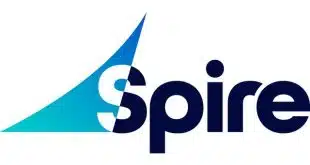VeriSign Inc. says heavy promotion it's putting behind its new trust mark for e-commerce will drive the number of payment-gateway client sites displaying the mark from 40,000 currently to more than 70,000 by year's end. And it expects that number to double by the end of 2005. The Mountain View, Calif.-based provider of online security and payment gateway services is advertising its new mark, which has undergone a complete redesign and repositioning (Digital Transactions News, Nov. 2), with banner ads on portal and online merchant sites and on a new consumer-oriented site it recently launched, verisignsecured.com. The online ads will feature co-marketing with Web merchants displaying the new mark. The campaign also includes print advertising in both consumer and trade media in an effort to educate online shoppers and independent sales organizations and other resellers of the company's payment gateway. “We have a healthy marketing budget for this in the fourth quarter and next year,” says Trevor Healy, vice president for payment services. The new campaign represents the first time VeriSign has promoted its mark, which up to now has been displayed by clients of its Secure Sockets Layer encryption service to reassure site visitors about the security of their online transactions. VeriSign , which commands top market share in the online transaction gateway business with 39% of total revenue, according to Celent Communications, provides processor connections to 120,000 online merchants, about one-third of which are also SSL clients. The company also serves another 155,000 sites that are clients of its SSL certificates but not its gateway. Fueled in part by a 23% year-over-year increase in sites using its gateway, transactions have been growing fast for VeriSign. Gateway volume was up 25% in the third quarter over the year-ago period, to 106.8 million transactions. Dollar volume accounts for about 35% of total e-commerce traffic, Healy says. Now, he says, the company wants to push the mark as holiday activity picks up and expand its market to all gateway clients, whether they use SSL encryption from VeriSign or on their own. Despite the absence of marketing, the old mark quickly established itself with both consumers and merchants, surprising even VeriSign. A survey it did showed 92% of online shoppers were aware of the mark, and 41% said they wouldn't shop at a site that didn't display a trust mark. The survey “blew us away,” says Healy. At the same time, he says, clients using VeriSign's gateway and providing their own SSL security wanted a mark they could show to reassure site visitors worried about frauds like identity theft and phishing. The result is the new seal, which VeriSign says is replacing the familiar, medal-shaped mark. When users click on the new mark, a pop-up window displays information about the site operator, including anti-fraud and security services it uses, as well as a dynamically updated date and time stamp. The code for the seal is served from VeriSign's computers, making it difficult to spoof, says Healy. “It's not impossible but it's not easy,” he says. “It would be a lot of effort for not a lot of gain.” VeriSign has also been active in promoting strong user authentication technology for the Web. It recently cut a deal with US Bancorp to provide a USB device consumers can plug into their computers to generate one-time passwords for use on the bank's online banking service.
Check Also
The Clearing House’s ACH Volume Swells As Adoption of Digital Transactions Spreads
Transactions on the Electronic Payment Network, the automated clearing house network, operated by The Clearing …





